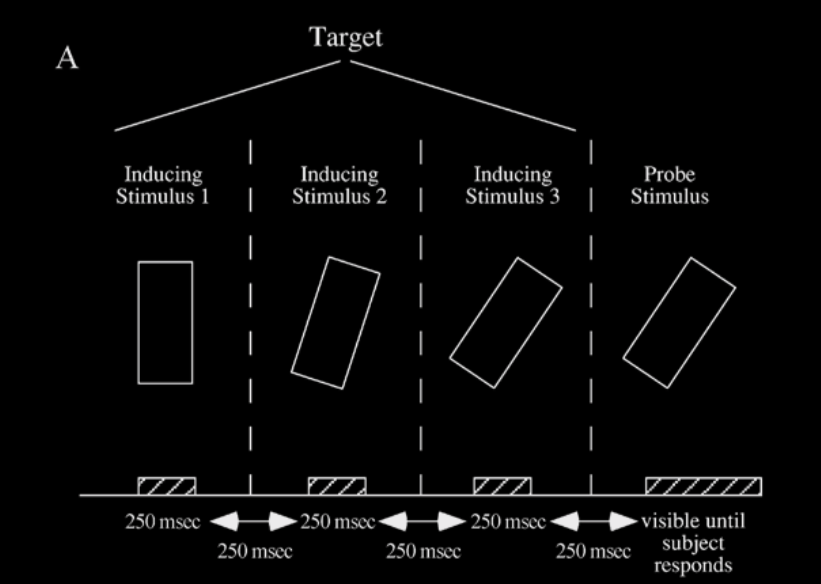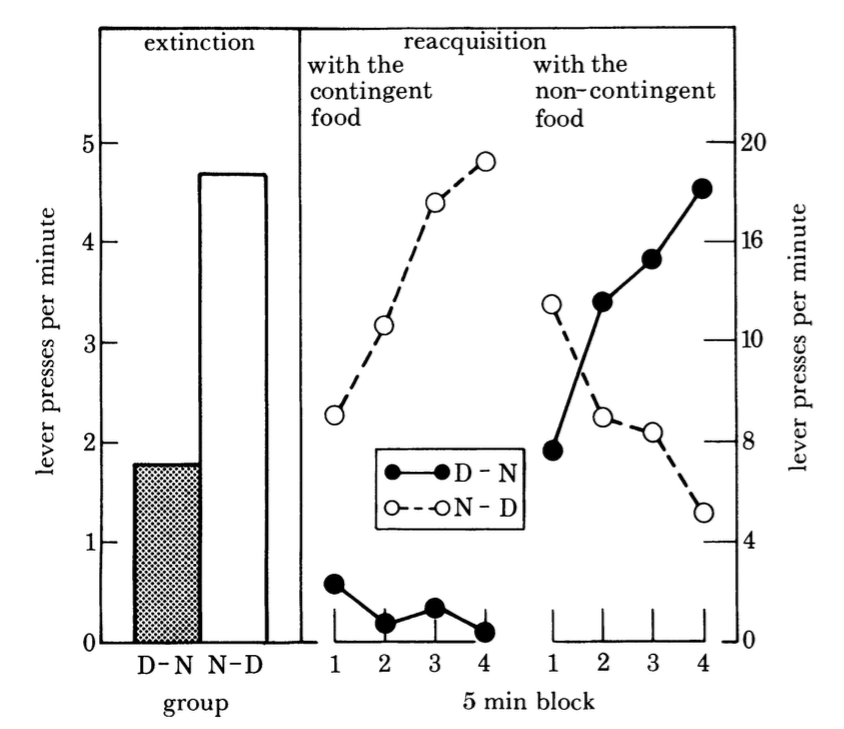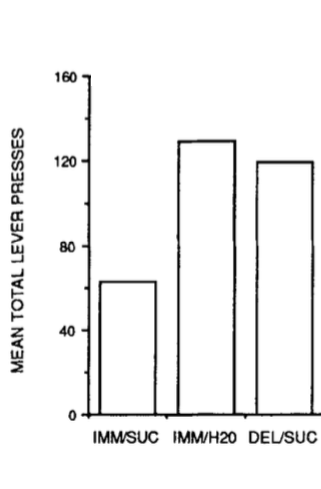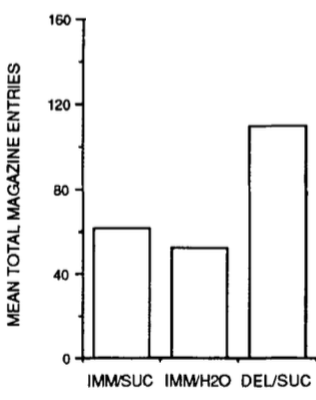Click here and press the right key for the next slide (or swipe left)
(This may not work on mobile or ipad. You can try using chrome or firefox, but even that may fail. Sorry.)
(If the slides don’t work, you can still use any direct links to recordings.)
also ...
Press the left key to go backwards (or swipe right)
Press n to toggle whether notes are shown (or add '?notes' to the url before the #)
Press m or double tap to slide thumbnails (menu)
Press ? at any time to show the keyboard shortcuts
Lecture 18:
Mind & Reality
\def \ititle {Lecture 18}
\def \isubtitle {Mind & Reality}
\begin{center}
{\Large
\textbf{\ititle}: \isubtitle
}
\iemail %
\end{center}
\section{Action: Recap}
\emph{Reading:} §Bach, Kent. ‘A Representational Theory of Action’. Philosophical Studies 34, no. 4 (1978): 361–79. https://doi.org/10.1007/BF00364703., §Bratman, M. E. (1984). Two faces of intention. The Philosophical Review, 93(3):375–405.
\section{The Question}
What is the mark that distinguishes actions?
\citep{Davidson:1971fz}.
‘The problem of action is to explicate the contrast between
what an agent does
and
what merely happens to him‘
\citep[p.~157]{frankfurt1978problem}.
[Frankfurt] Do spiders have intentions?
[Bach] When I duck to avoid a flying object, am I acting on any intention?
There are theoretically coherent ways of characterising intention on which the answers are yes.
Intentions as representations which somehow guide actions.
There are theoretically coherent ways of characterising intention on which the answers are no.
Bratman on intentions as elements in plans.
We have no way (so far) of distinguishing which among several theoretically coherent
possibilities is correct.
Step back! But why are we asking these crazy questions in the first place?
somebody says to you gosh you know um gemma what did you do today right
well i was thinking about whether spiders have intentions okay it's not
going to go down particularly well right so it's a little bit of a
strange thing to be doing why have we ended up with these strange
questions
the broader question is what's the mark that distinguishes actions what
distinguishes the events in our lives which are not actions at all but
merely things that befall us
as when i trip over a log and fall flatten
my face in my party gear on the muddy path versus things which are
actions right maybe i get up and i turn around and i kick the log okay
not a lot of rationality in kicking a log but maybe i do that right that
would be an action
What is the mark that distinguishes actions?
Davidson’s View
It is intention (or justifying reasons).
what's the mark that distinguishes them?
Davidson says
it's intention
it's the relation between the event and the intention that makes that event an action
Objection:
Frankfurt’s Argument from Spiders [??]
Bach’s objections from absent-minded, instinctive and impulive actions [??]
Frankfurt’s View
Action is ‘behaviour whose course is under the guidance of an agent’.
Two Problems:
What is guidance?
When is guidance ‘attributable to an agent’?
Consider that the spider’s movements walking on the web are guided by the web’s structure.
And similarly for your actions when driving on the roads.
(Guiding is not only something you do, but something that is done to you.)
Ok, so that’s why we’re asking the question ...
[Frankfurt] Do spiders have intentions?
[Bach] When I duck to avoid a flying object, am I acting on any intention?
There are theoretically coherent ways of characterising intention on which the answers are yes.
There are theoretically coherent ways of characterising intention on which the answers are no.
How can we decide between competing views which are both theoretically coherent?
if i look carefully at philosophical theories about the nature of
intention i know that some of those theories provide ways of
characterizing intention on which the answer to both questions will be
yes
i also know that there are other theories that philosophers have
constructed for example michael bratman on which the answer those
questions will be no
i also know that both of those kinds of theory there
are theories in both camps which are theoretically coherent right (there
isn't some subtle form of inconsistency in the theories)
How to make progress?
so now i face a difficult problem the problem is well how do i decide
between multiple theoretically coherent accounts of the matter how do i
do that
let me tell you about my favourite theory
it's clearly not adequate for me to tell you well look i just
think the answer is yes right or i think this is my favorite theory
well i can right but i think you'll be unimpressed
you're probably unimpressed anyway but you'll be even more unimpressed
right super unimpressed if i just give you a favorite theory
why are you unimpressed? Because there's no route to knowledge!
Of course i have preferences that lead me
to find some theories more attractive than others maybe you have
different preferences. It doesn't really help us with the knowledge
problem.
p Two part solution
p 1. kinds of explanation
p 2. contrast Frankfurt with Bach (intentions might guide; potentially false opposition because causing and guiding; what view we take should depend on how the explanations go)
p Tuebingen: Is science relevant?
p.indent distinguish How do people ordinarily make the distinction (perhaps in myriad ways) from how could we make a systematic and explanatorily useful distinction?
p.indent philosophers are studying neither
p.em-above Bochum kinds of explanation (primary motivational states)
p.em-above Point is that once we understand explanatory frameworks, we can get a fix on the distinctions Frankfurt/Spiders and Bach/ducking are aiming to capture with mere guesses.

When Philosophical Methods Fail
\section{When Philosophical Methods Fail}
Why are we stuck?
First step towards unsticking ourselves is to recognise
how we got into this mess in the first place.
what are the methods available to you or to me as philosophers?
guessing (‘intuition’),
imagining counterfactual situations
(‘thought experiments’),
reasoning,
& pursuing theoretical elegance
First, think about the methods philosophers use.
Am I missing any?
Next, think about how philosophers construct theories of action ...

Here’s Ayesha and she’s about to act, which involves some kind of
processes occurring in her imnd.

Ben want’s to predict Ayesha’s action, perhaps so he can coordinate his actions
around hers. He is therefore having a think about what Ayesha might be up to.
Implicit in Ben’s thinking is a model of actions.

And along comes the philosopher and attempts to guess what is going on in
Ben’s mind when he is thinking about Ayesha.
The philosopher asks, in effect, What model of actions is implicit in Ben’s thinking?
And this, essentially, is the raw material for philosophical theories of actions.

Focus on Ben for a moment.
What mundane purposes does thinking about actions serve?
\begin{itemize}
\item prediction and coordination
\item ethical (assigning responsibility, blame; living together)
\item normative (how actions should be)
\item regulative (he wants himself and others to live it out as much as to describe how things are)
\end{itemize}
Insofar as thinking about actions enables making predictions,
how accurate would we expect it to be?
So it’s not all about accuracy; in fact, of these, only prediction and coordination even
potentially requires that his model of actions is accurate.
Functions of Ben’s model of minds and actions:
- ethical
- normative
- regulative
- predictive
Second, consider Ben’s concern with making predictions.
--- speed vs accuracy
Whenever you are making predictions about anything at all, you face a
\textbf{trade-off between accuracy and speed}.
Making more accurate predictions requires considering more information and integrating
it in a more complex model of minds and actions.
By contrast, making faster predictions requires narrowing the information you consider
and using a less complex model of minds and actions.
Since an observer often has to make predictions fast enough to actually coordinate her actions
with another agent’s, and since making predictions consumes scarce
cognitive resources, the observer usually needs to trade accuracy for speed.
Because making predictions involves a trade-off between speed and accuracy,
we should not expect mundane thinking about actions to be especially accurate.
So Ben’s model of minds and actions is not built for accuracy.
So this is the model of minds and actions on which many philosophical theories
are based ... they are cast as attempts to characterise this model.
Maybe philosophers are not interested in the mark of action but in how
people think of action.
How do people ordinarily make the distinction between actions
and other events in an agent’s life? Perhaps in myriad ways.
But if philosophers were really interested in this, they’d be using the
methods of social psychology. Which they are not.
Why are we stuck?
Because philosophical methods alone are not likely to yield discoveries which answer our question.
My conclusion is that PHILOSOPHICAL THEORIES ARE NOT LIKELY TO BE RELEVANT to answering
the question.
Because philosophical methods are of limited use in making discoveries about the world.
It’s no surprise, given the limits of philosophical methods, that philosophers
disagree
So why would philosophers think about Davidson’s question at all?
One thing philosophical methods are ideally suited to is
identifying limits on scientific theories and asking questions.
Not knowing things is what philosophers are best at.
Relying entirely on philosophers to characterise actions
would be like
relying entirely on Aristotelians to characterise forces.
In the case of physical objects, I suppose few people seriously think
there is much we can understand without appeal to physics.
As Newton stressed, contemporary philosophical methods are not well suited to the task.
Contemporary philosophical methods are of limited use in making discoveries about the world.
First point: we don’t base our understanding of the physical
on common-sense.
‘In putting forward an account of light, the first point I want to draw to your attention is that it is possible for there to be a difference between the sensation that we have of it, that is, the idea that we form of it in our imagination through the intermediary of our eyes, and what it is in the objects that produces the sensation in us, that is, what it is in the flame or in the Sun that we term ‘light’’
\citep[][p. 81 (AT XI:3)]{descartes:1998_world}
Descartes, The World (AT 3)
This quote is quite complex. Let's try to simplify.
(Do this when quoting in your own work.)
Note that this is Descartes’ starting point
(in an early work that was never published because of fear of
religious repression.)

Further illustration (not from The World).
Descartes’ explanation of why the rainbow is a bow.
Relevant because of the gap between sensory perception and the things which cause it.
And shows Descartes examines sensory perceptions.
sensory perceptions
do not reveal
the natures of physical phenomena
\section{Perceiving Impetus}
representational momentum
Sometimes when adult humans observe a moving object that disappears, they will misremember the location of its disappearance in way that reflects its momentum; this effect is called \emph{representational momentum} \citep{freyd:1984_representational,hubbard:2010_rm}.
The trajectories implied by representational momentum reveal that the effect reflects impetus mechanics rather than Newtonian principles \citep{freyd:1994_representational,kozhevnikov:2001_impetus,hubbard:2001_representational,hubbard:2013_launching}.
And these trajectories are independent of subjects' scientific knowledge
\citep{freyd:1994_representational,kozhevnikov:2001_impetus}.
Representational momentum therefore reflects judgement-independent expectations about objects’ movements which
track momentum in accordance with a principle of impetus.%
\footnote{
Note that momentum is only one of several factors which may influence mistakes about the location at which a moving object disappears \citep[p.\ 842]{hubbard:2005_representational}.
%:
%\begin{quote}
%`The empirical evidence is clear that (1) displacement does not always correspond to predictions based on physical principles and (2) variables unrelated to physical principles (e.g., the presence of landmarks, target identity, or expectations regarding a change in target direction) can influence displacement.'
%
%...
%
%`information based on a naive understanding of physical principles or on subjective consequences of physical principles appears to be just one of many types of information that could potentially contribute to the displacement of any given target'
%\end{quote}
}
Hubbard 2005, figure 1a; redrawn from Freyd and Finke 1984, figure 1

Hubbard 2005, figure 1b; drawn from Freyd and Finke 1984, table 1
\textbf{Representational momentum suggests that there are automatic processes
which predict the future trajectories of physical objects.}

Kozhevnikov & Hegarty (2001, figure 1)
Fix shape and density. How would increasing the object’s size
affect how quickly it decelerates when launched vertically?
Impetus: larger size entails greater deceleration (so slower ascent).
Newtonian: larger size entails lower deceleration (so faster ascent) if
considering air resistance; otherwise size makes no difference.

simplified from Kozhevnikov & Hegarty (2001)
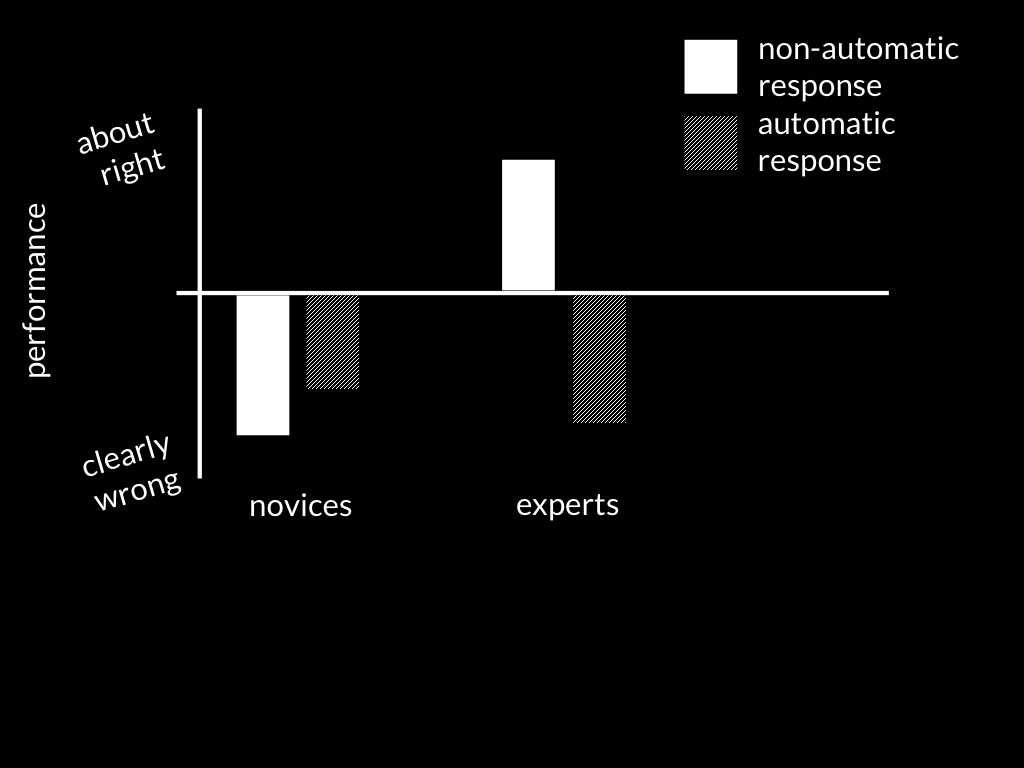
simplified from Kozhevnikov & Hegarty (2001)
This is a doubly exciting result.
It allows us to run the Argument From Jein:
\textbf{a conjecture about multiple systems can sometimes be distinguished
from a competing conjecture about a single system because
multiple systems make possible what a single system rule out:
incompatible responses to a single stimulus.}
But even more convincingly, the prediction generated by Kozhevnikov and Heggarty’s
conjecture about the computational description of the
system underpinning representational momentum
has been directly confirmed.
So while not decisive, I take this to be strong evidence
for a \textbf{vertical distinction} between two systems for physical cognition.
Let me pause to spell out the pattern as I think
Kozhevnikov and Heggarty have provided us with a good model for
evaluating claims about vertical distinctions between two systems.
They were let to a conjecture about the computational description
by reflection on the fact that
\textbf{any broadly inferrential process must make a trade-off between
speed and accuracy}.
‘To extrapolate objects’ motion on the basis of [e.g. Newtonian] physical principles, one should have assessed and evaluated the presence and magnitude of such imperceptible forces as friction and air resistance ... This would require a time-consuming analysis that is not always possible.
‘In order to have a survival advantage, the process of extrapolation should be fast and effortless, without much conscious deliberation.
‘Impetus theory allows us to extrapolate objects’ motion quickly and without large demands on attentional resources.’
Kozhevnikov and Heggarty (2001, p. 450)
The processes which underpin intuitions (guesses), like all cognitive processes, involve speed-accuracy trade-offs.
Being uncritically guided by these processes would limit us to Aristotelian theories of the physical
This is moderately uncontroversial. Few philosophers now think that relying on philosophical methods alone
could provide insight into the nature of the physical.
... as well as to Aristotelian theories of the mental.
To make discoveries about the physical, go beyond the Aristotelian project.

Two Kinds of Motivational State
\section{Two Kinds of Motivational State}
motivational states
desires are one kind of motivational state.
These states change under the influence of data-driven learning and fashion, among other things.
I prefer chocolate over rhubarb right now, but might later have the reverse preference.
When we think about motivational states, the most familiar kind is ...
primary motivational states
not directly modifiable by learning
- hunger
- thirst
- lust
- aversion
- ...
... preference. These states change over time in under the influence of learning (and fashion, ...)
I prefer chocolate over rhubarb right now, but might later have the reverse preference.
desires
changing, influenced by learning (and fashion, ...)
- chocolate over rhubarb
- lime over lemon
- red over blue
- ...
Another kind of motivational state is what animal learning theorists
call ‘primary motivational states’.
These are not modifiable by data-driven learning (nor fashion),
or at least not readily modifiable.
They inlcude hunger, thirst, lust and aversion.
Can your primary motivational states diverge from your desires?
Premises
1. Toxicosis directly influences only primary motivational states.
[Story about Dickinson’s melons (papaya in Basingstoke) goes here ...]
2. Primary motivational states directly influence only stimulus-driven actions.
To a first approximation, the \emph{stimulus-driven} actions are those
actions formed in the presence of stimuli because of the stimuli’s presence (not
driven by representations of the stimulus).

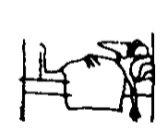
You see a rat and a lever.
The rat presses the lever occasionally.
Now you start rewarding the rat:
when it presses the lever it is rewarded with a particular kind of food.
As a consequence, the rat presses the lever more often.
\subsection{Devaluation - standard procedure}
\begin{itemize}
\item Training: Rat is put in chamber with Lever; pressing Lever dispenses sucrose (novel food).
\item Devaluation: Rat is taken into another chamber, poisoned,
and then exposed to sucrose.
\item Extinction Test: Rat returns to chamber with Lever; pressing Lever does nothing.
\end{itemize}
Dickinson, 1985 figure 3; Balleine & Dickinson, 1991 figure 1 (part)
Devaluation - standard procedure:
Training: Rat is put in chamber with Lever; pressing Lever dispenses sucrose (novel food).
pressing the lever is actually the way to get the papaya right you press the lever and you get papaya delivered
Devaluation: Rat is taken into another chamber, poisoned, and then exposed to sucrose.
Extinction Test: Rat returns to chamber with Lever; pressing Lever does nothing.
Dickinson, 1985 figure 3; Balleine & Dickinson, 1991 figure 1 (part)
‘Mean lever-press rates during the extinction (left-hand panel) and reacquisition tests (right-handpanel) followingthe devaluation of either the contingent (group D-N) or non-contingentfood (group N-D).’
the rat's going to go into the chamber with the lever so that pressing the lever is going to dispense papaya okay this is a novel food for the rat nice and sweet marvelous and then there's going to be a devaluation phase so the rat's going to be taken into another chamber poisoned and then exposed directly to the papaya so now the rat gets to chase the papaya gets taste the papaya after being poisoned and then i'm going to do what's called an extinction test so i'm going to return the rat to the chamber where the lever is and just observe how often the rat presses the lever and what i notice here is that when the rat has been poisoned after consuming the papaya the elite and re-experienced it the lever pressing rate drops off dramatically compared to our control subjects who have experienced poisoning but not in relation to the papaya in relation to some other novel food right so these rats are still interested in pressing the lever much as they always were
there's a second thing that i'm going to do just like the first thing
i'm going to take those rats and i'm going to poison again half of them
after they've experienced a novel food papaya but this time i'm not
going to give them any opportunity to re-encounter the papaya after
they've been poisoned so these rats are going to go novel food tasty
and then nothing, no papaya, and then they're going to go back and
do the extinction test where they press the lever but it's an
extinction test that's to say that pressing the lever never actually
delivers the food which you did before
So What happens if we poison the subjects but do not re-expose them to the food?
Is just poisoning enough?
Hypothesis 1: Poisoning does directly influence desires
Prediction: lever-pressing should reduce (as in the standard procedure)
Hypothesis 2: Poisoning does not directly influence desires
Prediction: lever-pressing should not reduce (unlike in the standard procedure)
‘Experiment I: Mean number of lever presses ... during the extinction test session
...
The various groups received either immediate (Groups IMM/SUC and IMM/ H20) or delayed (Groups DELjSUC and DEL/H2O)
toxicosis [delayed did not cause aversion] and were re-exposed either to the sucrose solution (Groups IMM/SUC and DEL/SUC)
or to water (Groups IMM/H2O and DEL/H20).’
Pavlovain conditioning, primary motivational states can have a direct effect on actions.
i didn't tell you earlier but when i press the lever i get the
papaya delivered but the papaya gets delivered into a special little
room, the magazine, so what i've got to do is press the lever and then zip into the
room and get the papaya right and when you look at the
magazine entries, what you find is that those rats who have been
poisoned are just like the rats who've been poisoned and re-encountered
the papaya
this is exactly like what's happening with you when
you order the papaya when it comes you're like oh actually i can't eat
that i don't want it they're going to the magazine
Aversion does not directly influence desires.
‘The pattern of results accords [...] with a role for an incentive learning
process in the reinforcer devaluation effect;
not only must consumption of
the reinforcer be paired with toxicosis,
the animals must also have an
opportunity to contact the reinforcer after aversion conditioning if there is
to be a change in instrumental performance’
\citep[p.~293]{balleine:1991_instrumental}
Balleine & Dickinson, 1991 p. 293
[To introduce the term ‘incentive learning’]
A moment ago I asked, What happens if we poison the subjects but do not re-expose them to the food?
Can your primary motivational states dissociate from your desires?
The two kinds of motivational states can dissociate
primary motivational states
not directly modifiable by learning
- hunger
- thirst
- satiety
- aversion
- ...
desires
changing, influenced by learning (and fashion, ...)
- chocolate over rhubarb
- lime over lemon
- red over blue
- ...
\section{Experience Is the Key}
\emph{Reading:} §Dickinson, A. and Balleine, B. (1994). Motivational control of goal-directed action. Animal Learning & Behavior, 22(1):1–18.
Experience is key ...
‘primary motivational states, such as hunger, do not determine the value of an instrumental goal directly;
rather, animals have to learn about the value of a commodity in a particular motivational state through direct experience with it in that state’
\citep[p.~7]{dickinson:1994_motivational}
‘primary motivational states have no direct impact on the current value that an
agent assigns to a past outcome of an instrumental action; rather, it appears
that agents have to learn about the value of an outcome through direct experience with
it, a process that we refer to as \emph{incentive learning}’
\citep[p.~8]{dickinson:1994_motivational}
Dickinson & Balleine, 1994 p. 7
A role for experience in solving the interface problem.

Intention and Motivational States
\section{Intention and Motivational States}
In rats (and humans), we can dissociate at least two kinds of states involved in causing actions.
Namely, preferences and primary motivational states.
These are linked to distinct processes, and distinct patterns of explanation (both of which involve justifying reasons of one or another kind).
Intentions (as well as beliefs and desires) play a role in one pattern of explanation, but not in the other.
\begin{enumerate}
\item In entering the magazine, our rat is acting.
\item The rat’s action is driven by a primary motivational state and a stimulus (the sucrose solution).
\end{enumerate}
Therefore (from 2):
\begin{enumerate}[resume]
\item The rat’s action does not involve intention.
\end{enumerate}
Therefore (from 1 and 3):
\begin{enumerate}[resume]
\item Not all actions involve intentions.
\end{enumerate}
1. In not entering the magazine, our rat is acting.
2. The rat’s action is driven by a primary motivational state and a stimulus (the sucrose solution).
3. The rat’s action does not involve intention.
Therefore (from 1 and 3):
Not all actions involve intentions.
What is the mark that distinguishes actions?
Davidson’s View
It is intention (or justifying reasons).
Objection:
Frankfurt’s Argument from Spiders [??]
Bach’s objections from ... [??]
Steve’s objection from primary motivational states.
Frankfurt’s View
Action is ‘behaviour whose course is under the guidance of an agent’.
Two Problems:
What is guidance?
When is guidance ‘attributable to an agent’?
So has Frankfurt won after all?
[LATER: No because the category of action turns out to lack uniformity.]
A single binary contrast? Or a family of cases.
I suggest that in explaining guidance, we will have to appeal to
belief, desires and intentions in some cases.
But in other cases we will have to appeal to primary motivational states and stimuli.
So Frankfurt is mistaken to think that his approach contrasts with Davidson’s.
Aside: Even if this is right,
Frankfurt did make at least one important point: we have to understand the role of intentions
and continuing throughout actions; and if we can’t explain guidance by invoking intentions
(which perhaps we cannot)
then Davidson’s idea won’t work.

Conclusion on Action, Intention and Motivational States
\section{Conclusion on Action, Intention and Motivational States}

conclusion
In conclusion, ...
\section{Conclusion}
Different marks distinguish different kinds of action.
To find the marks, identify the patterns of explanation.








